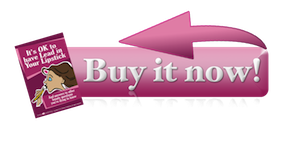Perry and I discuss breaking news on the safety of antibacterial soaps including an explanation of what the FDA is doing about it and what that means for you. This is not just another crappy year end review show – it’s all brand new material!
Win a free copy of our book just by reviewing the show on iTunes!
(We’ll pick one lucky winner from all the reviews left on iTunes in the next week.)
SHOW NOTES
In December the FDA announced that it’s going to take a closer look at antibacterial soaps.
What is an antibacterial soap?
Category I = GRASE. (Generally Recognized As Safe and Effective.)
Category II = Not GRASE. (Denotes that an active ingredient has been shown to be unsafe, ineffective, or both. You can NOT use these.)
Category III = GRAS or GRAE.
Triclosan is Category IIISE which means they’d like to see both safety and efficacy data.
Starting in 1978 and ending in 1994 the FDA developed what it calls a Tentative Final Monograph on Antimicrobial products which said only Povidone-iodine at 5 to 10 percent was Category I, several were Category II and some were Category III. Since Triclosan is relatively cheap and easy to formulate with, it became the favorite. So the FDA said as long as you use this ingredient at these levels, you can make these claims but we’re going to keep looking at these ingredients in case there’s any new evidence that indicates there are any issues with safety or efficacy.
Soap vs sanitizer and consumer use vs professional use
There are two special cases to be aware of:
Soap vs hand sanitizer – the regulations are specific to “wash” products which means they are to be used with water (in other words they are rinsed off.) Alcohol is allowed in leave on products (hand santiziers) but NOT washes because they are rinsed away.
Consumer vs healthcare – Also note that the law treats consumer products differently than health care products. Different classes of ingredients are allowed for products used in hospitals, for example.
Why is Triclosan a problem now?
The FDA isn’t kidding when they say they want more data on Category III ingredients. They’ve been looking at Triclosan and there’s two new pieces of data that is making them rethink the drug status of this ingredient. First, some new evidence that bacteria may be becoming immune to Triclosan and therefore we maybe creating super bugs by over use of this ingredient. Second there’s some new data that suggests Triclosan may be an endocrine disrupter.
What’s the FDA doing?
FDA is doing three things:
First, they’ve put out a call for more data on Triclosan, asking manufacturers of antibacterial hand soaps and body washes to demonstrate that their products are safe for long-term daily use and more effective than plain soap and water in preventing illness and the spread of certain infections.
Second, they’re redefining what kind of products are allowed to use antibacterial ingredients. They’ve introduced a new categorization calling antiseptic washes and products we are now calling antiseptic rubs. Back in 1994 the TFM just called everything “soaps.” They’re also creating a distinction between consumer and health care products – the 1994 TFM did not distinguish between consumer antiseptic handwashes and rubs and health care antiseptic handwashes and rubs. This proposed rule covers consumer antiseptic washes only and does not cover consumer antiseptic rubs.
Essentially, back in ’94 the regulations were written for “soaps” which meant bar soaps since they were the primary cleansing product. Now there are hand washes, body washes, foaming hand washes, and so on. So the dosage and exposure dynamics may have changed – that’s one reason the rules are being revisited.
Third they’re looking at the other ingredients from the ’94 TFM as well and decided to change a few categories – to be more conservative. For example, Povidone-iodine is changed from Category 1 to Category 3.
The Beauty Brains bottom line
We have to wait for the latest data and see what the FDA’s final assessment is. The good news is, that if you’re concerned, it’s very easy to avoid personal care products with Triclosan – just check the labels on your hand washes, deodorant soaps, toothpastes, and anything else you have that claims to be “antibacterial.”

Buy your copy of It’s OK to Have Lead in Your Lipstick to learn more about:
- Clever lies that the beauty companies tell you.
- The straight scoop of which beauty myths are true and which are just urban legends.
- Which ingredients are really scary and which ones are just scaremongering by the media to incite an irrational fear of chemicals.
- How to tell the difference between the products that are really green and the ones that are just trying to get more of your hard earned money by labeling them “natural” or “organic.
Click here for all the The Beauty Brains podcasts.
